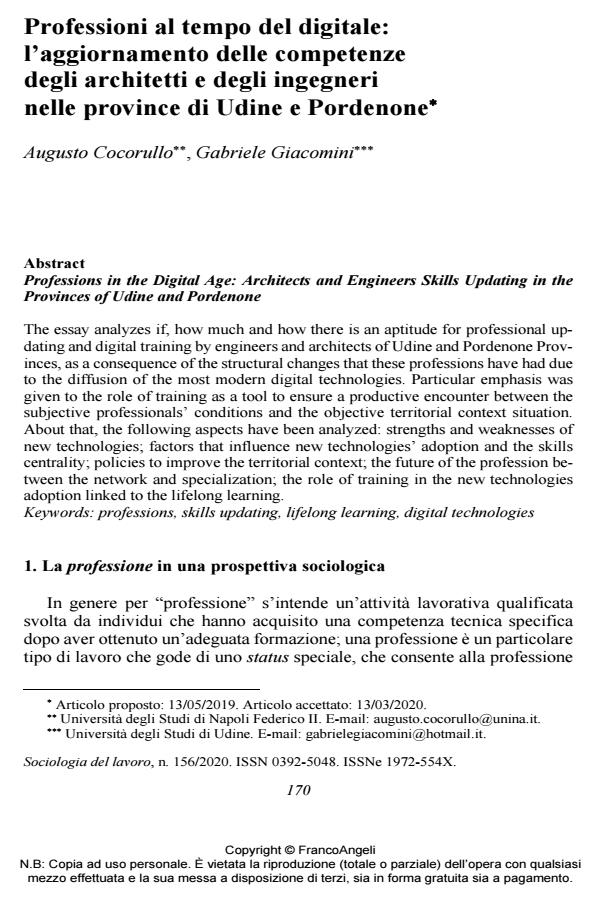Professions in the Digital Age: Architects and Engineers Skills Updating in the Provinces of Udine and Pordenone
Journal title SOCIOLOGIA DEL LAVORO
Author/s Augusto Cocorullo, Gabriele Giacomini
Publishing Year 2020 Issue 2020/156
Language Italian Pages 25 P. 170-194 File size 284 KB
DOI 10.3280/SL2020-156008
DOI is like a bar code for intellectual property: to have more infomation
click here
Below, you can see the article first page
If you want to buy this article in PDF format, you can do it, following the instructions to buy download credits

FrancoAngeli is member of Publishers International Linking Association, Inc (PILA), a not-for-profit association which run the CrossRef service enabling links to and from online scholarly content.
The essay analyzes if, how much and how there is an aptitude for professional updating and digital training by engineers and architects of Udine and Pordenone Provinces, as a consequence of the structural changes that these professions have had due to the diffusion of the most modern digital technologies. Particular em-phasis was given to the role of training as a tool to ensure a productive encounter between the subjective professionals’ conditions and the objective territorial con-text situation. About that, the following aspects have been analyzed: strengths and weaknesses of new technologies; factors that influence new technologies’ adop-tion and the skills centrality; policies to improve the territorial context; the future of the profession between the network and specialization; the role of training in the new technologies adoption linked to the lifelong learning.
Keywords: Professions, skills updating, lifelong learning, digital technologies
- Digital Education in Russia and Central Asia Bogdan S. Vasyakin, Yulia S. Lisachkina, Rais Kh. Mutolapov, Alexander V. Ivanchenkov, Artem A. Nikolaev, pp.309 (ISBN:978-981-16-9068-6)
- El trabajo como bien escaso: una constante de permanente actualidad en la evolución de las relaciones laborales Juan Carlos García Quiñones, in FORO. Revista de Ciencias Jurídicas y Sociales, Nueva Época /2025 pp.289
DOI: 10.5209/foro.98995
Augusto Cocorullo, Gabriele Giacomini, Professioni al tempo del digitale: l’aggiornamento delle competenze degli architetti e degli ingegneri nelle province di Udine e Pordenone in "SOCIOLOGIA DEL LAVORO " 156/2020, pp 170-194, DOI: 10.3280/SL2020-156008